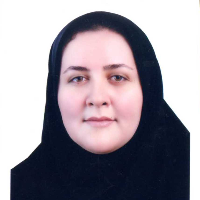Fire Simulation and Fire Spreading Zoning in Forest Ecosystem Using FARSITE Model (Case Study: Ilam Province Forests)
Wildfires cause substantial losses of property and human lives in ecosystems in Iran and all around the world. Every year, about 6000 ha of forests are affected by fires in Iran (Jahdi, Salis, Darvishsefat, Mostafavi, Alcasena, Etemad, Lozano, & Spano, 2015).These fires can occur naturally due to climate change or abnormally caused by human activities in the forests. In fact, fire is one of the most important factors in disrupting the structure and dynamics of forest in natural conditions that produces a large amount of dead wood caused by the destruction of trees (Coban & Mehmet, 2010). As a result, there are significant costs to prevent fire every year in countries it takes place, and managing ecosystems is a way to reduce the effects of fire on war and maintain perspectives. To manage fire in forests, understanding the behavior of the fire and the factors causing it in a prone environment and factors affecting its behavior are essential (Artes, Cencerrado, Cortes, & Margalef, 2013). One way to manage fire is FARSITE model. This model has become popular due to its steady structure and simplicity of popularity in the modeling of fire spreading. This model is considered as one of the main fire simulation systems used to describe the behavior and release of horrific fires and is a semi-experimental model (Shen, Prince, Gallacher, Fletcher, & Fletcher, 2017).
For the FARSITE Fire Extender simulator, we need 5 layers of GIS height, slope, direction, fuel type, and canopy. All of these spatial data describe the landscape of the area. Topographic data (elevation, slope and tilt direction) were extracted from 1: 25000 maps of the country's mapping organization, which were converted to ASCII (Kanga & Singh, 2017) format using ArcGIS10 to prepare for entering the FARSITE model. Meteorological data is another input similar to the FARSITE firewall, which includes the degree of heat, relative humidity, and wind speed. To obtain climatic data, synoptic stations in Ilam province were recorded at 3-hour intervals. The appropriate burning model of the research area was selected based on the description of 53 standard burning model developed on the basis of the fire extension model. This selection was made using vegetation maps, map coverage of the area and observations and field studies based on similarity of the existing vegetation characteristics and description of this model. In the last step, in order to simulate the GIS layers (slope, direction, height, combustion and canopy), the FARSITE model was entered in an appropriate format. Then, the area was classified according to the extent of the fire.
The results showed that fire in four areas where it occurred had different behaviors, which is also due to different natural conditions in these areas. Also, fire hazard zoning, in the province of Ilam shows that, 1.5% of the area has a high risk of fire. Therefore, it can be stated that the study of different factors (topography, vegetation, burning and climatic conditions) in the studied areas shows the complexity of fire behavior in these areas. It is under the control of various factors. To identify the behavior of the fire, all the parameters and influential factors must be considered together and in conjunction with each other.
Also, according to the results of FARSITE simulation and its accuracy evaluation in the region, using kappa coefficient, all points are in agreement with real values, which indicates the performance of the model in this region, and in none of the regions the coefficient value Kappa has not been negative. Therefore, the implementation of this model is a useful guide for forest fire management, and based on it, a fire prevention crisis management program can be implemented in the three phases of initial operations or pre-occurrence measures (prevention plan), action plans (coping plan), and post-operation operations (recovery plan).
Fire , Forest , FARSITE , Topography , Climate , Combustion , Ilam
- حق عضویت دریافتی صرف حمایت از نشریات عضو و نگهداری، تکمیل و توسعه مگیران میشود.
- پرداخت حق اشتراک و دانلود مقالات اجازه بازنشر آن در سایر رسانههای چاپی و دیجیتال را به کاربر نمیدهد.



